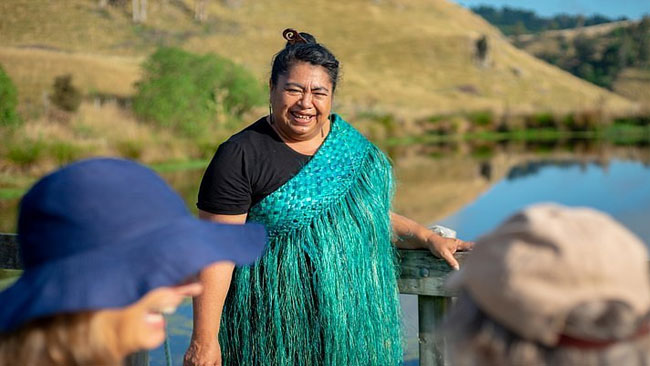
Walking the Pathways of the Ancestors: Best Māori Tours in New Zealand
New Zealand’s beauty is not just found in its mountains or beaches — it is written in the footsteps of those who first lived upon this land. Māori tours offer something rare: a chance to walk pathways shaped by ancestors, to hear stories that rise from the earth itself, and to travel with meaning.
Here are some of the best Māori-led tours across Aotearoa that connect travelers to living culture and ancient lands.
Hokianga Pā Sites Cultural Walk (Northland) Standing above the Hokianga Harbour, where Kupe first arrived, this guided walk traces the old ridgelines where pā once stood watch. Local iwi guides share stories of migration, settlement, and connection to the sea.
Waipoua Forest Twilight Tour (Northland) As darkness falls, journey into the Waipoua Forest to meet Tāne Mahuta — the largest kauri tree, revered as the lord of the forest. In the soft light, the guardianship stories of Te Tai Tokerau come alive, carried by voices among the trees.
Whakarewarewa Living Village Tour (Rotorua) In the heart of Rotorua’s geothermal fields, this village is still home to Māori families who live beside steaming vents and bubbling pools. Guided tours offer glimpses into daily life, tradition, and resilience that continue across generations.
East Cape Sunrise and Sacred Sites Tour (Tairāwhiti) Before the rest of the world stirs, stand on the cliffs of East Cape and greet the first light. Alongside sunrise, this tour visits ancient pā and tells the stories of how these lands first embraced their new settlers.
Travel with open eyes, open hearts, and deep respect. These tours are not performances — they are gifts of memory, spirit, and connection.
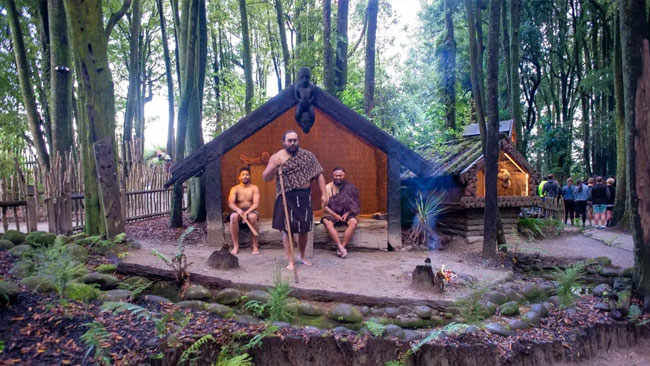
A Guide to Visiting Living Māori Villages with Respect
Māori villages are not museums. They are homes, communities, and sacred spaces alive with language, laughter, and legacy. Visiting a living Māori village offers an incredible opportunity for cultural exchange — but it carries responsibilities too.
Here are important ways to visit with respect and awareness.
- Understand the Invitation Visits are offered as a form of hospitality and cultural sharing. Remember that you are entering a living space where traditions are upheld and mana (prestige, authority) is protected.
- Follow Tikanga (Protocols) At many villages, a pōwhiri (formal welcome) marks the beginning of the experience. Listen closely to guides about when to speak, when to move, and how to show respect, especially during welcomes or performances.
- Dress and Act Modestly Cover shoulders where possible, remove hats inside meeting houses, and avoid loud or disruptive behaviour. Humility is seen as a sign of respect.
- Photography Etiquette Always ask before taking photographs, especially around sacred objects, meeting houses (wharenui), or ceremonies. Some spaces may be off-limits for photography altogether.
- Listen with More Than Your Ears Travel is often treated as entertainment. Visiting a Māori village is different — it’s an act of relationship-building. Listen to stories not just for their details, but for their spirit.
When you visit with respect, you carry the stories you hear with integrity. You become part of a thread stretching across generations.
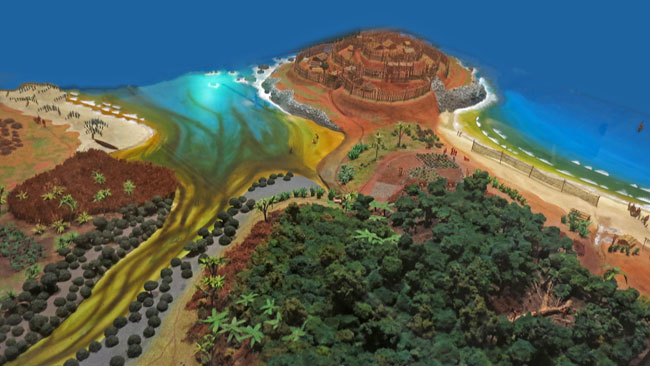
Where Story and Land Meet: Exploring Pā Sites Across Aotearoa
Across the ridgelines, coastlines, and forests of New Zealand lie traces of ancient pā — fortified villages built with wisdom and strategy. These were not only defenses against warfare; they were places of governance, community, ceremony, and life.
Exploring pā sites today is a way to step into the living history of Aotearoa.
Pā as Living Memory Many pā sites remain unmarked except by the natural contours of the land — terraces carved into hillsides, earthworks following ancient boundaries. Others are maintained and celebrated, with guided tours, markers, and cultural interpretation.
Key Pā Sites Across New Zealand
- Hokianga Harbour Ridges (Northland) Overlooking vast waters, these pā held strategic control over entry into the inner lands of Te Tai Tokerau.
- Whakarewarewa Thermal Valley (Rotorua) In this geothermal region, pā coexisted with bubbling hot pools and steaming ground — life in harmony with nature’s power.
- East Cape Headlands (Tairāwhiti) Along the remote coastline, ancestral pā overlooked fishing grounds and waka routes, guardians of first arrivals.
Walking with Care When visiting pā sites, respect is essential. Stay to paths where marked, avoid touching stonework or artifacts, and carry yourself with awareness that these places still hold the presence of those who lived and dreamed there.
Pā sites are not relics frozen in time. They are voices in the earth, still speaking, still guiding, still holding the heart of Aotearoa.
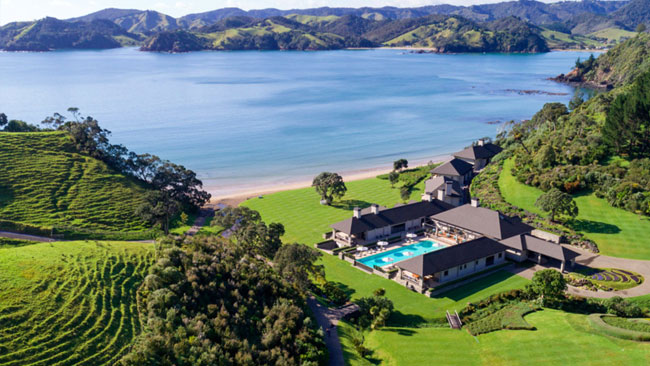
Staying Near Sacred Sites: Northland Hotels with a Story
In Te Tai Tokerau, the land speaks. Northland is home to some of the oldest Māori settlements, where pā once stood on ridges above harbours, rivers, and forests. Staying here offers more than a view — it places you within reach of places shaped by memory, migration, and ancestral legacy.
Here are several stays where you can rest close to Northland’s sacred sites.
The Heads Hokianga Lodge Positioned above Hokianga Harbour — where Kupe’s waka made landfall — this lodge lets you look out across water that still carries story. Nearby, the Waipoua Forest stands tall with kauri, including Tāne Mahuta, the lord of the forest.
Opononi Hotel Located at the harbour’s mouth, this historic hotel offers access to pā sites across the dunes and waters of the Hokianga. A ferry ride away, you’ll find hilltops once used as lookouts and places of ceremony.
Copthorne Hotel and Resort Bay of Islands Just steps from the Waitangi Treaty Grounds, this waterfront stay sits in one of the most pivotal cultural locations in Aotearoa. You’ll be close to coastal pā, marae, and narratives of alliance, tension, and change.
Each of these places invites reflection — not just rest. To stay near a sacred site is to listen to the land with humility, to be still long enough for its meaning to rise.
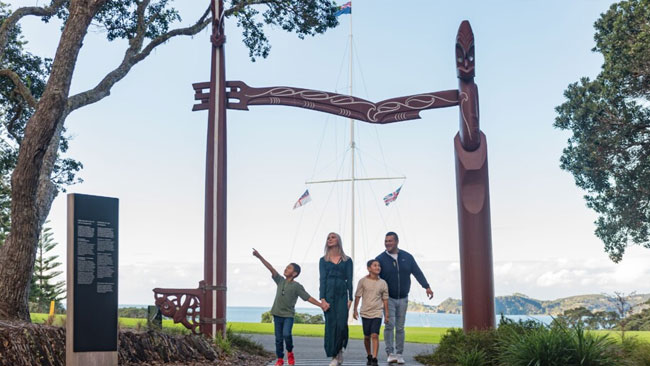
Top 5 Cultural Accommodations in Te Tai Tokerau
Northland’s landscapes hold deep cultural significance — from ancestral waka routes to inland hilltop pā. But where you stay can also shape your journey. Here are five Northland accommodations where the connection to Māori heritage is part of the experience.
- The Heads Hokianga Lodge A lodge of quiet strength and sweeping views. Close to Waipoua Forest and known pā sites, it’s a stay that encourages slow mornings and meaningful exploration.
- Doubtless Bay Villas Perched high above the northern coast, these villas face seas once navigated by early Polynesian voyagers. A place to breathe, reflect, and reconnect.
- The Old Oak Boutique Hotel Located in the historic precinct of Mangonui, this restored building sits near coastal pā trails and trading sites where Māori and Europeans once met.
- Bunkhouse Farmstay A rural stay near Kaikohe with views of pā-covered ridgelines. Ideal for travellers looking to experience land-based living and learn from the whenua.
- Whangārei Falls Holiday Park Modest and calm, this place is close to heritage walks that wind past sacred waters and pā remnants tucked into forest edges.
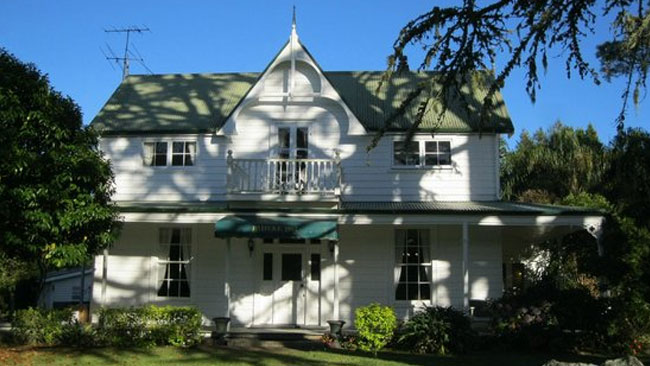
Where to Stay Near Historic Pā in Northland
The pā of Northland are not tourist landmarks. They are etched into the earth — silent but enduring. From raised terraces in the bush to headlands shaped into layered platforms, these sites offer a glimpse into Māori strength, strategy, and connection to place.
Here are key areas to stay where pā sites remain nearby — waiting, still present.
Hokianga Region Stay: The Heads Hokianga Lodge or Opononi Hotel Explore: Walk the ridge trails, visit the landing sites, and learn about the earliest chapters of Aotearoa’s story.
Doubtless Bay and the Far North Stay: Doubtless Bay Villas Explore: Discover pā along the coastlines once guarded by natural defences and spiritual markers.
Whangārei Stay: Whangārei Falls Holiday Park Explore: Follow trails through bush-covered hills and waterfall paths where pā once looked out over valleys.
Mangonui and the East Coast Stay: The Old Oak Boutique Hotel Explore: Trace shoreline tracks where trade routes flowed between iwi and early settlers.
Each site, each path, each stay — it’s all part of a living thread that still stretches across Te Tai Tokerau.
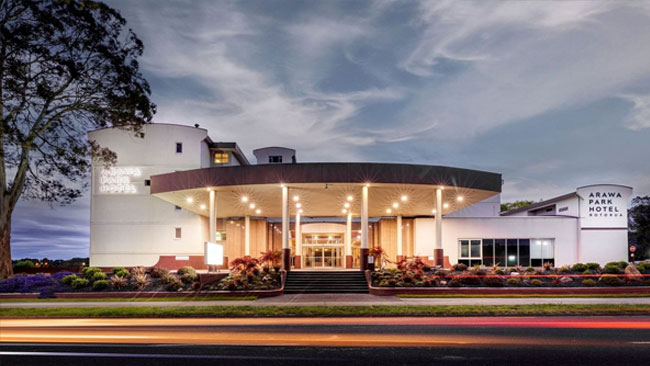
Top 8 Rotorua Hotels for Authentic Māori Experiences
Rotorua isn’t just a destination — it’s a cultural heartbeat. Here, geothermal activity meets living tradition, and where you choose to stay shapes how deeply you connect. These eight hotels place you close to sacred sites, storytelling spaces, and the everyday rhythm of Māori life.
- Peppers on the Point A lakeside estate with views toward Mokoia Island, a centrepiece in Te Arawa legends. Tranquil, elegant, and spiritually anchored.
- Princes Gate Hotel A historic stay across from Government Gardens, where galleries, marae, and performances meet on sacred ground.
- Aura Accommodation Eco-minded and effortlessly warm, this central spot offers walking access to Te Puia, Whakarewarewa, and local eateries steeped in culture.
- Koura Lodge Tucked beside the lake, this peaceful retreat is just minutes from Ōhinemutu — a still-inhabited Māori village and marae.
- Novotel Rotorua Lakeside Lakeside comfort with easy access to heritage trails, geothermal parks, and traditional guides along the shoreline.
- Regent of Rotorua A boutique stay in the heart of the city, near markets, Māori-owned businesses, and galleries.
- Sudima Lake Rotorua A calm, sustainable hotel steps from Polynesian Spa and Whakarewarewa Forest — deeply rooted in manaakitanga (hospitality).
- Rydges Rotorua Located near the Redwoods and the edge of the geothermal valley, this stay offers comfort on the threshold of powerful land.
Each hotel offers more than a pillow — it offers proximity to places where story, heat, and heritage rise from the ground itself.
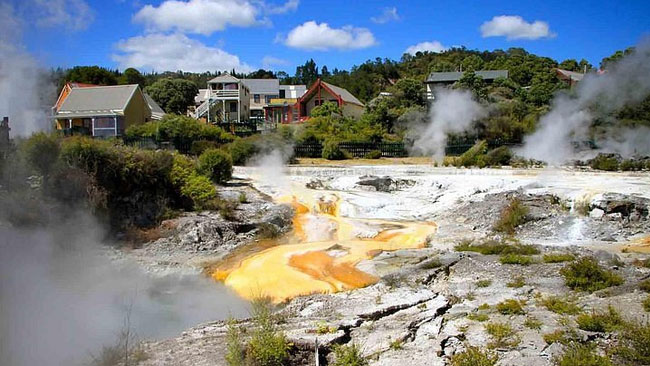
Walking the Line Between Geothermal Wonders and Māori Heritage
In Rotorua, the line between land and story is thin. This is a region where steam rolls across roads, geysers burst skyward, and ancient traditions are carried in every step. To walk here is to enter a dialogue — not just with the land, but with the people who still hold its knowledge.
Whakarewarewa — A Living Village Still home to Māori families, this village is shaped by both tradition and geothermal forces. Visitors walk among vents and hot pools while learning about generations who adapted, cooked, and thrived on this earth.
Ōhinemutu — Sacred by the Lake Set on the shore of Lake Rotorua, Ōhinemutu is a living marae community where spiritual connection and daily life intersect. The carved meeting houses speak of lineage, and the steam that rises from the ground is not a spectacle, but a presence.
Te Puia — Guardians of Craft and Story Home to the Māori Arts and Crafts Institute, Te Puia combines dramatic geysers with enduring tradition. Inside, master carvers and weavers keep ancestral techniques alive — not as preservation, but as continuity.
Rotorua is not a theme park. It is a living world — heated from within, held by its people, and shared with care.
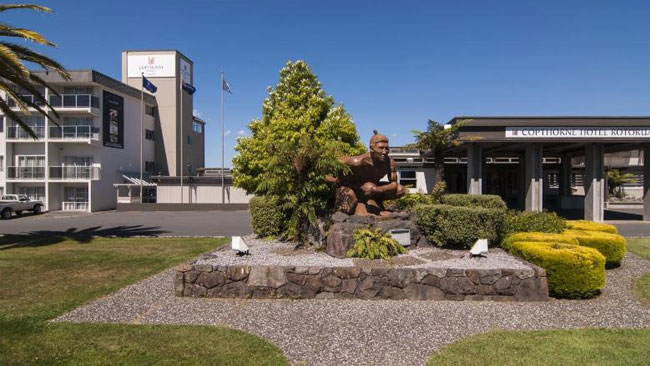
Where to Stay Near Whakarewarewa: Rotorua’s Living Heart
Whakarewarewa is one of the only places in the world where you can stay near an active geothermal village still occupied by descendants of those who built it. It’s a rare thing: to rest where life, culture, and heat have flowed for generations.
Best Stays Near Whakarewarewa:
- Aura Accommodation — 5 minutes’ walk from the gates. Sustainable, simple, and welcoming to those who travel with intention.
- Rydges Rotorua — Just a short drive away, located near both the forest and the geothermal basin.
- Sudima Lake Rotorua — Between the lake and Whakarewarewa, this is an easy access point to both cultural and natural experiences.
- Koura Lodge — Peaceful and lakefront, but still just minutes from the valley where stories rise with the steam.
When staying near Whakarewarewa, you’re not on the edge of an attraction — you’re beside a living, breathing legacy. Honour that by moving slowly, listening deeply, and choosing your stay with care.
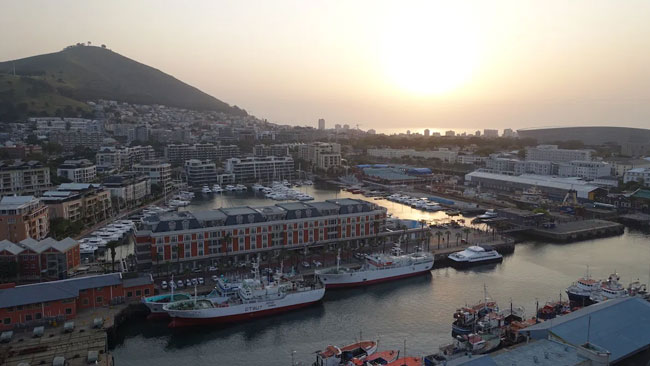
East Cape Hotels Where History Meets the Horizon
Tairāwhiti is the place where light first touches Aotearoa. Along the coast and inland hills lie echoes of early settlement, sacred pā sites, and a deep relationship between people and whenua (land). Staying here offers more than coastal beauty — it brings you into direct contact with the earliest chapters of Māori life.
Here are some of the best hotels and retreats across East Cape that keep you close to that story.
Tatapouri Bay Eco Retreat Just north of Gisborne, these beachside cabins sit where the ocean opens wide. The coast here was once a gathering place for kai moana (seafood) and the surrounding cliffs held watchful pā. It’s a simple, soulful stay.
Pacific Harbour Motor Inn Set between the Waimata and Taruheru Rivers, this central inn offers comfort near key heritage sites and walking trails. The nearby headlands once supported pā that guarded the inland routes.
Motu Trails Inn In Opotiki, where coast and forest meet, this inn is a favourite with cultural cyclists and trail walkers. It’s near land once shaped into terraced fortifications, now softened by bush and time.
Waikanae Beach Motel Step out your door and straight onto one of Gisborne’s most historic coastlines. The sand here saw the arrival of ancestral waka, and to sleep beside it is to rest where the story began.
From each of these places, the horizon feels different — not just east, but forward. First light. First land. First story.
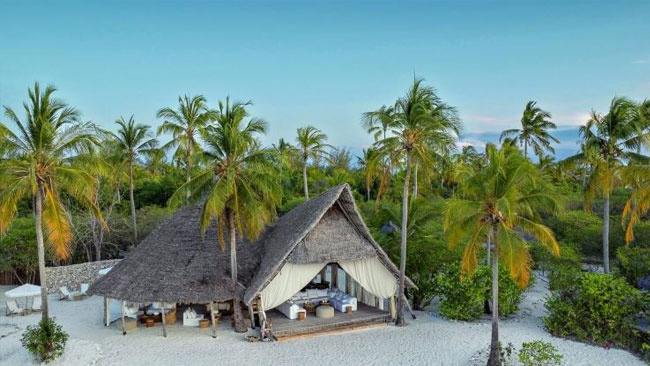
Following Ancestral Footsteps: Places to Stay on the East Coast
Tairāwhiti is more than a region — it’s a journey along the footprints of those who first called this place home. From inland river crossings to high headlands, each stay on the East Coast can become a quiet waypoint along a path filled with meaning.
Here’s a collection of stays that keep you near the footsteps of ancestors.
Whakatō Lodge Near the edges of Gisborne, this quiet retreat rests close to river trails and land long shaped by iwi. It’s peaceful, but never separate — you feel the land at work all around you.
Teal Motor Lodge Central but garden-wrapped, this lodge offers a balance of convenience and nature. From here, short drives take you to pā remnants, interpretive sites, and local marae.
Portside Hotel Riverside rooms that gaze toward waters where waka once landed and where commerce and community still move. Near markets and heritage trails, this is a modern stay in a place of continuity.
Tatapouri Bay Glamping Pods Minimal, refined, and close to the sea — these pods let you watch the stars from ancestral ground. In the early morning, seabirds wheel over cliffs that once hid coastal pā.
To stay here is to walk beside the unseen. The footsteps may not always be visible — but they are there.
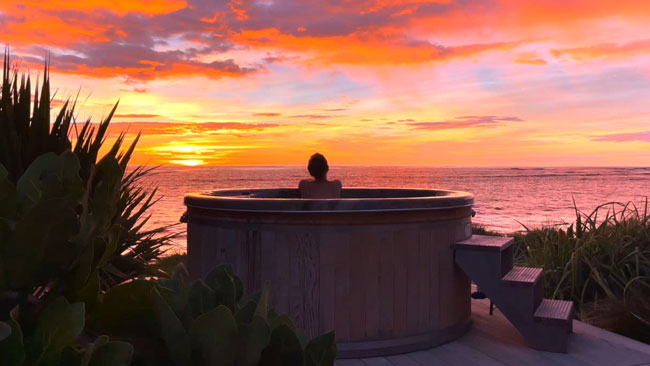
A Journey Through Tairāwhiti: Sacred Sites and Seaside Retreats
Tairāwhiti invites a different kind of traveller — someone drawn to quiet coasts, ancient ridges, and deep time. In this region, the most meaningful stays aren’t necessarily the most luxurious — they’re the ones that keep you close to land, light, and legacy.
This post outlines how to shape a journey that pairs cultural depth with beautiful coastal rest.
Start in Gisborne Begin near the landing place of the ancestral waka Horouta. Visit the Tairāwhiti Museum, walk the riverside trails, and spend your nights at Pacific Harbour or Teal Motor Lodge for easy access to both nature and culture.
Head East to Tatapouri Sunrise here is like nowhere else. At Tatapouri Bay Eco Retreat or the glamping pods, you’ll feel the openness of the Pacific and the grounding of a coastline shaped by generations.
Travel North to Opotiki Winding roads lead you to Motu Trails Inn — a perfect base for exploring inland tracks that follow ancient travel lines through forest and hill.
At every stop along this journey, the land gives something back: reflection, perspective, and quiet connection to those who came before.
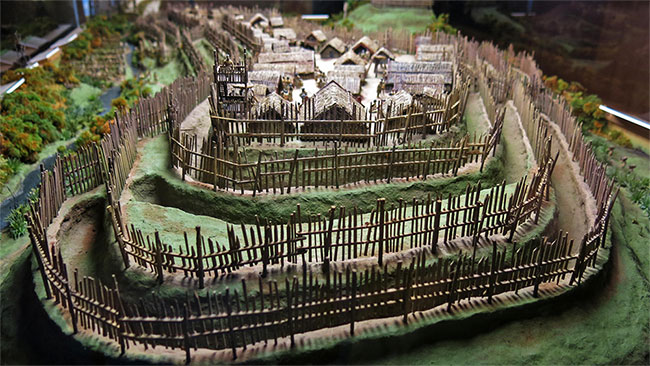
Walking the Pathways of the Ancestors: Best Māori Tours in New Zealand
New Zealand’s beauty is not just found in its mountains or beaches — it is written in the footsteps of those who first lived upon this land. Māori tours offer something rare: a chance to walk pathways shaped by ancestors, to hear stories that rise from the earth itself, and to travel with meaning.
Here are some of the best Māori-led tours across Aotearoa that connect travelers to living culture and ancient lands.
Hokianga Pā Sites Cultural Walk (Northland) Standing above the Hokianga Harbour, where Kupe first arrived, this guided walk traces the old ridgelines where pā once stood watch. Local iwi guides share stories of migration, settlement, and connection to the sea.
Waipoua Forest Twilight Tour (Northland) As darkness falls, journey into the Waipoua Forest to meet Tāne Mahuta — the largest kauri tree, revered as the lord of the forest. In the soft light, the guardianship stories of Te Tai Tokerau come alive, carried by voices among the trees.
Whakarewarewa Living Village Tour (Rotorua) In the heart of Rotorua’s geothermal fields, this village is still home to Māori families who live beside steaming vents and bubbling pools. Guided tours offer glimpses into daily life, tradition, and resilience that continue across generations.
East Cape Sunrise and Sacred Sites Tour (Tairāwhiti) Before the rest of the world stirs, stand on the cliffs of East Cape and greet the first light. Alongside sunrise, this tour visits ancient pā and tells the stories of how these lands first embraced their new settlers.
Travel with open eyes, open hearts, and deep respect. These tours are not performances — they are gifts of memory, spirit, and connection.
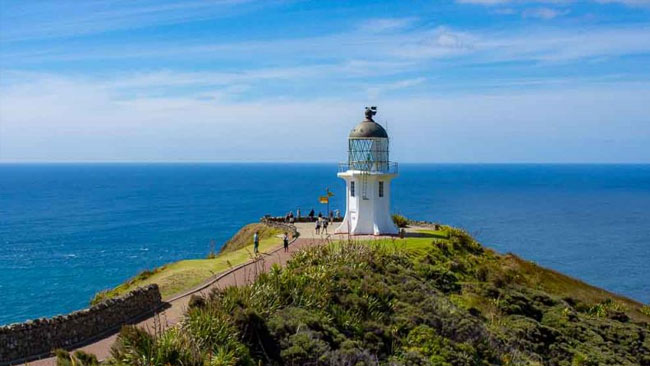
A Guide to Visiting Living Māori Villages with Respect
Māori villages are not museums. They are homes, communities, and sacred spaces alive with language, laughter, and legacy. Visiting a living Māori village offers an incredible opportunity for cultural exchange — but it carries responsibilities too.
Here are important ways to visit with respect and awareness.
- Understand the Invitation Visits are offered as a form of hospitality and cultural sharing. Remember that you are entering a living space where traditions are upheld and mana (prestige, authority) is protected.
- Follow Tikanga (Protocols) At many villages, a pōwhiri (formal welcome) marks the beginning of the experience. Listen closely to guides about when to speak, when to move, and how to show respect, especially during welcomes or performances.
- Dress and Act Modestly Cover shoulders where possible, remove hats inside meeting houses, and avoid loud or disruptive behaviour. Humility is seen as a sign of respect.
- Photography Etiquette Always ask before taking photographs, especially around sacred objects, meeting houses (wharenui), or ceremonies. Some spaces may be off-limits for photography altogether.
- Listen with More Than Your Ears Travel is often treated as entertainment. Visiting a Māori village is different — it’s an act of relationship-building. Listen to stories not just for their details, but for their spirit.
When you visit with respect, you carry the stories you hear with integrity. You become part of a thread stretching across generations.
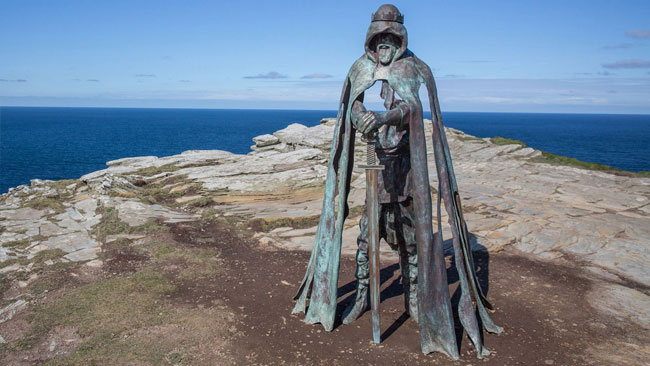
Where Story and Land Meet: Exploring Pā Sites Across Aotearoa
Across the ridgelines, coastlines, and forests of New Zealand lie traces of ancient pā — fortified villages built with wisdom and strategy. These were not only defenses against warfare; they were places of governance, community, ceremony, and life.
Exploring pā sites today is a way to step into the living history of Aotearoa.
Pā as Living Memory Many pā sites remain unmarked except by the natural contours of the land — terraces carved into hillsides, earthworks following ancient boundaries. Others are maintained and celebrated, with guided tours, markers, and cultural interpretation.
Key Pā Sites Across New Zealand
- Hokianga Harbour Ridges (Northland) Overlooking vast waters, these pā held strategic control over entry into the inner lands of Te Tai Tokerau.
- Whakarewarewa Thermal Valley (Rotorua) In this geothermal region, pā coexisted with bubbling hot pools and steaming ground — life in harmony with nature’s power.
- East Cape Headlands (Tairāwhiti) Along the remote coastline, ancestral pā overlooked fishing grounds and waka routes, guardians of first arrivals.
Walking with Care When visiting pā sites, respect is essential. Stay to paths where marked, avoid touching stonework or artifacts, and carry yourself with awareness that these places still hold the presence of those who lived and dreamed there.
Pā sites are not relics frozen in time. They are voices in the earth, still speaking, still guiding, still holding the heart of Aotearoa.